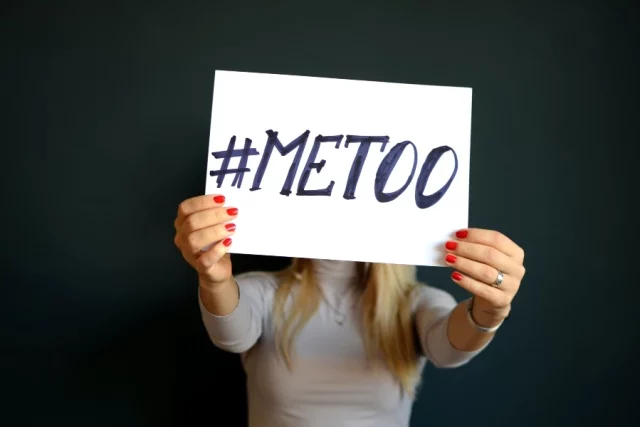The National Committee for the Prevention of School Violence defines sexual harassment as unwelcome sexual advances, requests for sexual favors, and other verbal or physical conduct of a sexual nature. These behaviors can come from many different people, including students, teachers, co-workers, clients, supervisors, and more. Sexual harassment can be mild, such as an offensive sexual joke, or severe, such as sexual assault. It can also take place in different settings such as the workplace, school, mall, club, and more.
Any person can be a perpetrator of sexual harassment. The most common perpetrators are classmates and peers who use peer pressure to make someone feel uncomfortable in their work or social environment. This can happen with an individual or group of students and adults that have power over the victim. Some examples are male teachers and coaches that make sexual comments to female students and women in the workplace and sexually harass men.
What is Sexual Harassment?
Sexual harassment, by definition, is any unwelcome sexual advances or requests for sexual favors. Sexual harassment can take place anywhere and is often a tool used by individuals to gain power over others. Sexual harassment can be verbal or physical and may include offensive jokes or comments about sex or the victims’ bodies; sexual innuendos and propositions; unwanted touching of intimate parts of the body; written sexual comments on papers or work projects; and other offensive remarks such as those directed at a person’s sexuality.
What is “Quid Pro Quo” Sexual Harassment?
Quid pro quo sexual harassment occurs when a person is threatened or forced into an unwanted sexual situation in order to receive a benefit. Quid pro quo can be explicit, but it may also take place in the form of subtle pressure. For example, a supervisor may offer a promotion if the employee has sex with him; or the teacher may have better grades and look favorably upon a student who agrees to go out after school. Quid pro quo harassment frequently happens in the workplace, but it can also occur in schools, clubs, social organizations, and anywhere else where adults have power over others. It is especially common among male supervisors who sexually harass female employees.
What is “Hostile Work Environment” Sexual Harassment?
Hostile work environment harassment occurs when a single incident or series of incidents, which are severe or pervasive enough to create an abusive working environment, take place. Acts that can constitute hostile work environment harassment include harassing sexual comments, inappropriate touching, and visual displays of sexual objects and attire. The harassment must be severe in order to be considered a hostile work environment, but if it involves unwelcome sexual advances, requests for sex, or other forms of physical contact that are imposed on the victim by the harasser, it is also considered sexual harassment.
What is “Non-Direct” Sexual Harassment?
Non-direct sexual harassment is also a type of sexual harassment. Non-direct harassment occurs when someone is subjected to unwelcome sexual advances or other forms of unwanted sexual behavior that do not originate from the harasser. Examples include being teased about one’s sexuality or another person’s sexuality, receiving negative comments about one’s appearance in order to make the victim feel uncomfortable, and discriminatory behaviors such as being treated rudely, refused promotions, and job opportunities because of perceived sexual orientation. Non-direct harassment is also referred to as gender-based teasing, offensive jokes, and offensive comments.
Should I Contact a Lawyer If I Have Been Sexually Harassed in the Workplace?
If you are a victim of sexual harassment in the workplace, it is crucial to speak to a lawyer to make sure your employer takes action against the harasser. Sexual harassment cases often become much more complicated because they often involve an ongoing situation or pattern of harassment that has taken place over time. In some cases, employers may be able to take action against harassers on their own, but others must go through the court system and face high costs as well as long legal delays.
Moreover, sexual harassment is considered a form of discrimination, which is against both state and federal law. The Equal Employment Opportunity Commission (EEOC) has created a set of criteria for employees or applicants who believe they have been sexually harassed in the workplace. If the criteria are met, it means that the victim’s employer was at fault for allowing the harassment to take place. In such cases, the victim may have grounds to file a lawsuit against his employer.
Conclusion:
Sexual harassment is a serious problem that can take place in any environment. Although men are also victims of sexual harassment, the majority of victims are women. Sexual harassment can be mild or severe, and it can involve a single incident or series of incidents. Some examples of sexual harassment include inappropriate touching, unwanted advances, sexual jokes and comments, and offensive gestures directed toward the victim’s sexuality. Sexual harassment may also occur in public places such as schools, social organizations, and clubs.














